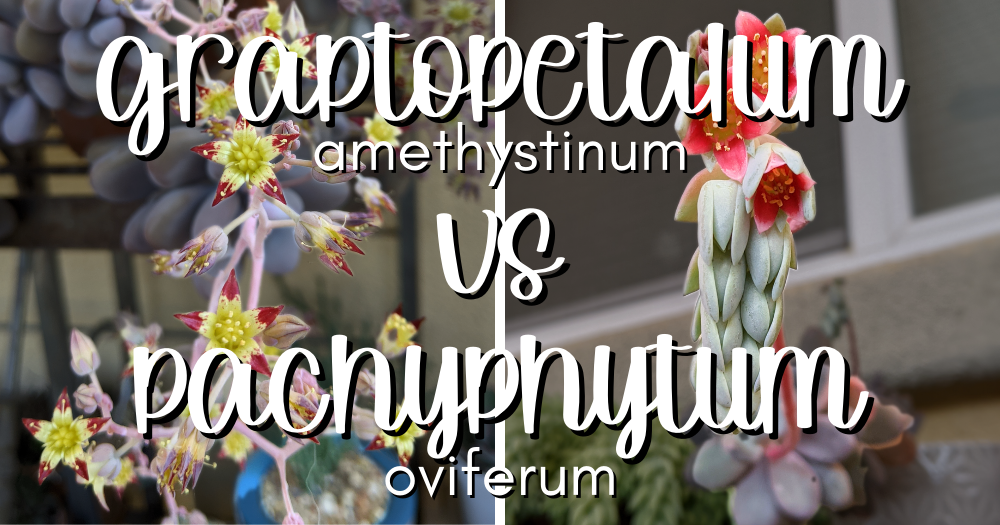Two popular succulent species that often confuse gardeners are Graptopetalum amethystinum ‘Lavender Pebbles’ and Pachyphytum oviferum ‘Moonstones.’ There’s also quite a bit of mislabeling you’ll see online. Both are members of the Crassulaceae family and share some similarities in appearance, but there are distinct differences between these two succulents. In this article, we’ll take a closer look at the characteristics of these two succulent species to help you better understand their unique features and how to care for them.
Dig in!
Graptopetalum amethystinum ‘Lavender Pebbles’ and Pachyphytum oviferum ‘Moonstones’: What’s the Difference?
Graptopetalum amethystinum ‘Lavender Pebbles’ and Pachyphytum oviferum ‘Moonstones’ are two different species of succulent plants that belong to the same family, Crassulaceae. While they may look similar, there are several differences between the two, including:
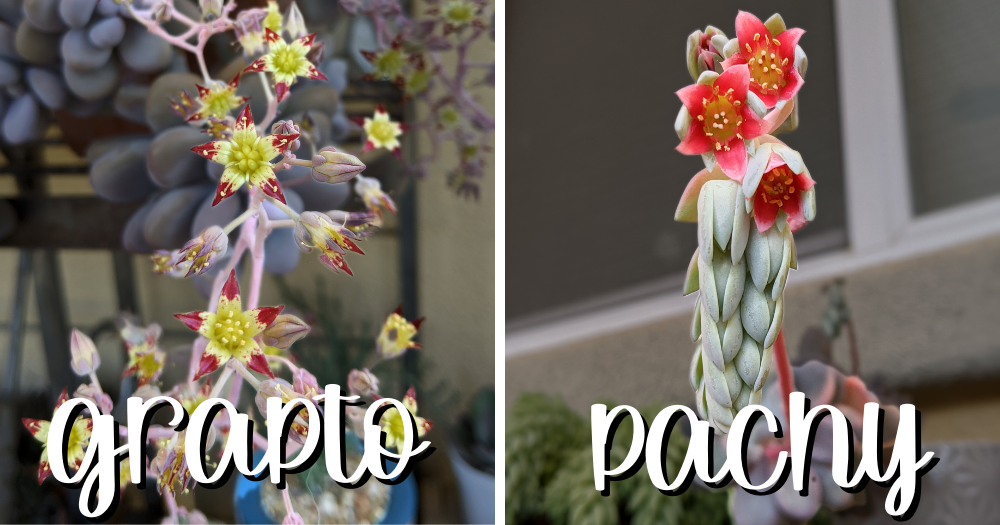
Flower color and shape:
This is the main way you can instantly tell them apart. Although both species produce small flowers, their colors and shapes differ. Graptopetalum amethystinum ‘Lavender Pebbles’ produces star-shaped flowers that are light-colored at the base, with the tips being red or pink, while Pachyphytum oviferum ‘Moonstones’ has small, bell-shaped flowers. The bloom stalks of Graptopetalum amethystinum ‘Lavender Pebbles’ are slender and branch out producing multiple flowers. The bloom stalk of Pachyphytum oviferum ‘Moonstones’ is thicker and doesn’t branch out.
You might also like: Succulent Propagation Timeline
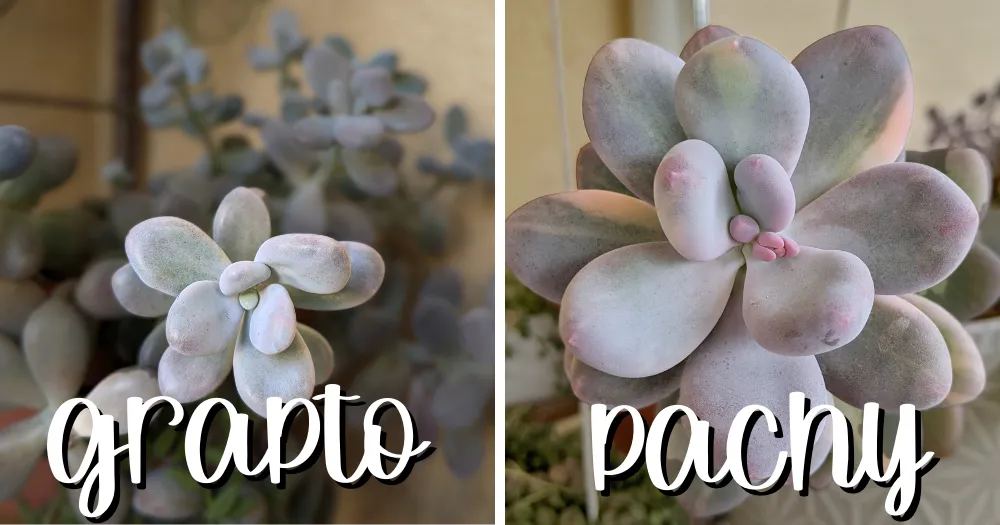
Leaf color and shape:
Graptopetalum amethystinum ‘Lavender Pebbles’ has lavender-pink leaves, while Pachyphytum oviferum ‘Moonstones’ has gray-green leaves. The shape of their leaves also differs, with Graptopetalum amethystinum ‘Lavender Pebbles’ having wider, flatter leaves compared to the more oval-shaped leaves of Pachyphytum oviferum ‘Moonstones.’
You might also like: Echeveria ‘Melaco’ or Echeveria ‘Chroma’ – How to Instantly Tell These 2 Succulents Apart (A Visual Guide)
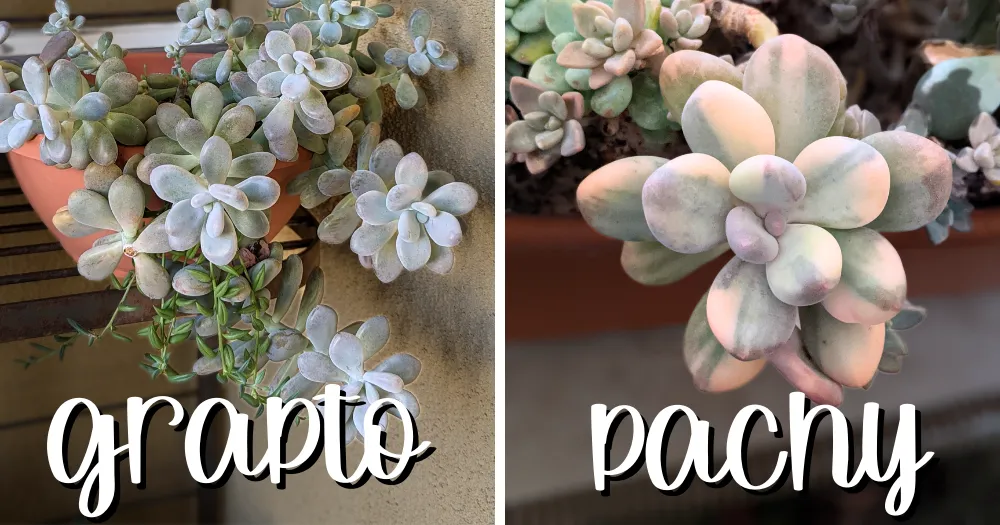
Genus:
Graptopetalum amethystinum ‘Lavender Pebbles’ belongs to the Graptopetalum genus, while Pachyphytum oviferum ‘Moonstones’ belongs to the Pachyphytum genus.
You might also like: Echeveria ‘Cubic Frost’ vs Echeveria ‘Topsy Turvy’ and How to Instantly Tell the 2 Apart
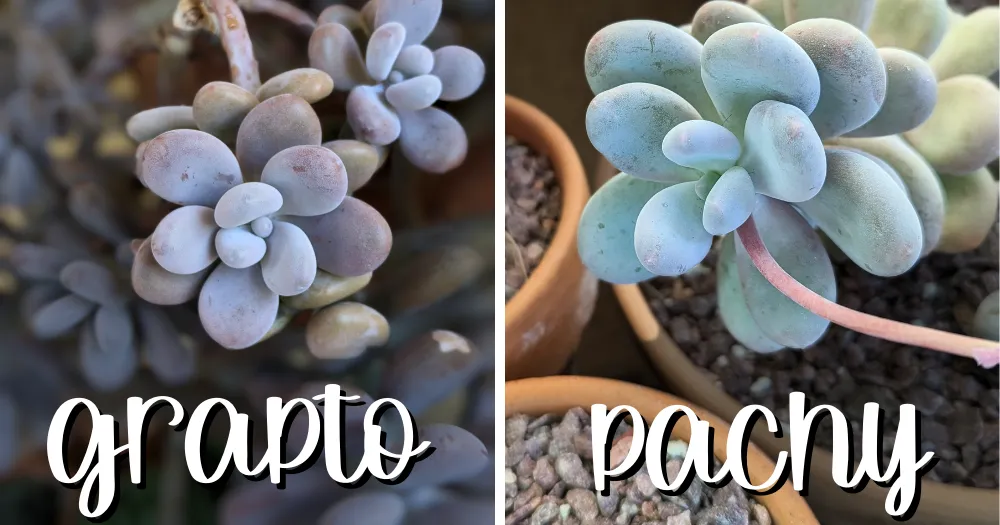
Light and water needs:
Graptopetalum amethystinum ‘Lavender Pebbles’ prefers more shade and indirect light than Pachyphytum oviferum ‘Moonstones,’ which requires higher light intensity to grow well. Graptopetalum amethystinum ‘Lavender Pebbles’ can tolerate more frequent watering than Pachyphytum oviferum ‘Moonstones,’ which is more prone to rot in moist soil.
You might also like: Crassula ovata ‘Jade Plant’ vs Portulacaria afra ‘Elephant Bush’: How to Instantly Tell These 2 Succulents Apart
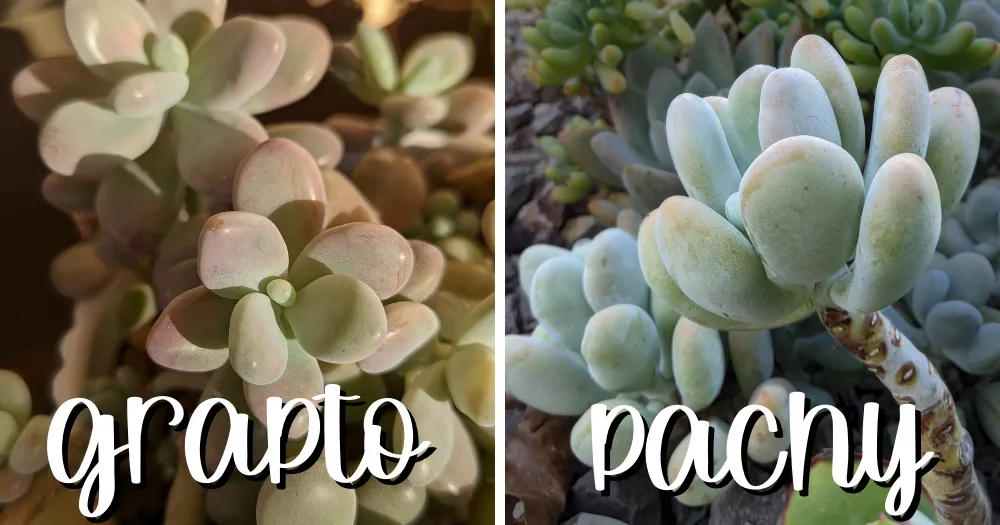
Cold tolerance:
Graptopetalum amethystinum ‘Lavender Pebbles’ is more cold-hardy and can tolerate light freezes, while Pachyphytum oviferum ‘Moonstones’ is more sensitive to cold and requires protection from frost.
You might also like: How to tell the difference between Echeveria ‘Black Knight’ & ‘Black Prince’
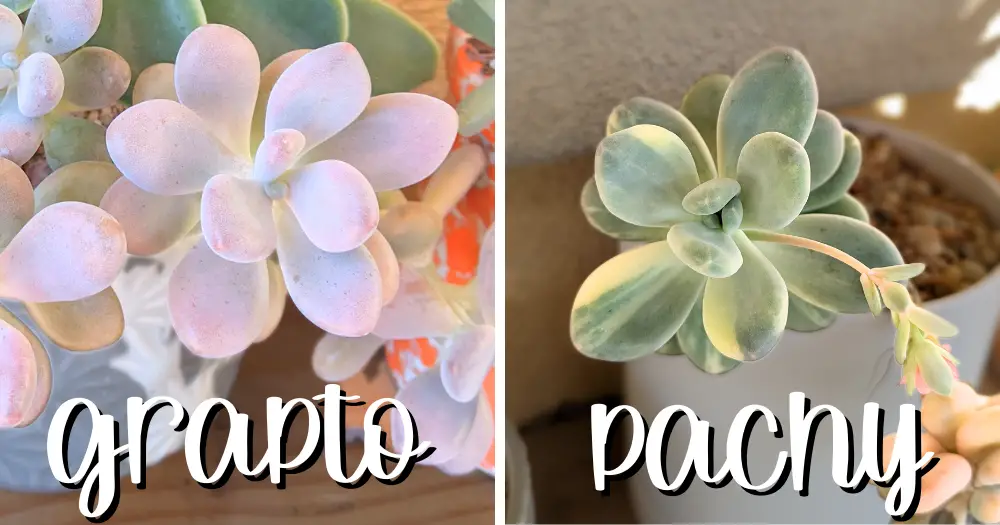
Growth habit:
Graptopetalum amethystinum ‘Lavender Pebbles’ grows slightly faster and larger than Pachyphytum oviferum ‘Moonstones.’ Graptopetalum amethystinum ‘Lavender Pebbles’ offsets more readily to form clusters, while Pachyphytum oviferum ‘Moonstones’ grows more individually with fewer offsets.
You might also like: The ONE Simple Thing Succulents Need to Thrive and 5 Reasons Why Wind is It
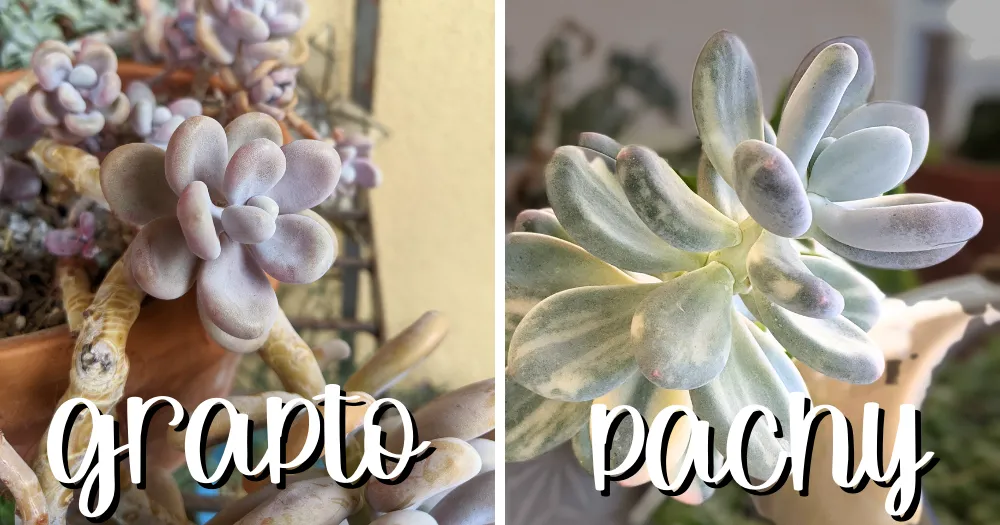
Can You Grow Graptopetalum amethystinum ‘Lavender Pebbles’ and Pachyphytum oviferum ‘Moonstones’ Together?
It can be challenging to grow Graptopetalum amethystinum ‘Lavender Pebbles’ and Pachyphytum oviferum ‘Moonstones’ together in the same pot because they have different light and water needs. Graptopetalum amethystinum ‘Lavender Pebbles’ prefers more shade and can tolerate higher moisture, while Pachyphytum oviferum ‘Moonstones’ needs more light and will tolerate drier soil conditions.
You might also like: Succulent Soil: Ultimate Guide & 4 DIY Recipes to Keep Your Succulents Happy and Healthy
To try and accommodate both plants, you could try planting them in separate containers with different soil mixes and water schedules. Alternatively, you could try placing them in a larger pot and using a soil mix that drains well to prevent overwatering, while also providing enough light for Pachyphytum oviferum ‘Moonstones’ and some shade for Graptopetalum amethystinum ‘Lavender Pebbles’.
You might also like: How Much Light Do Succulents Need? A Comprehensive Guide in 12 Parts
It’s important to monitor the soil moisture level and adjust your watering schedule accordingly, as overwatering can lead to root rot and other issues. Additionally, make sure to provide adequate air circulation to prevent fungal growth and other problems that can occur in humid conditions.
You might also like: Root Rot in Succulents: How to Identify and Treat the Problem
What are some common mistakes people make when caring for these succulents?
- Overwatering: Both succulents are prone to rot if soil is kept too moist. Allow soil to dry out between waterings and never leave them sitting in water.
- Inadequate light: ‘Moonstones’ needs relatively bright light to thrive and will etiolate and show stress coloring with too little light. ‘Lavender Pebbles’ needs some shade but still ample indirect light.
- Extreme cold: Both succulents can be damaged by frost and freezing temperatures. Bring them indoors if temperatures drop below 40 F.
- Inappropriate potting mix: Use a fast-draining cactus potting mix or succulent soil to provide the airy, well-draining medium these succulents need. Regular potting soil holds too much moisture and can lead to rot.
- Fertilizing at the wrong times: Only fertilize during the growing season when the succulents are actively growing. Reduce or stop feeding in the winter when growth slows or plants go dormant.
You might also like: How & When to Water Succulents So They Don’t Die (2023 Update)
For more succulents that are hard to tell apart, click here.

Where to Buy Succulents Online

